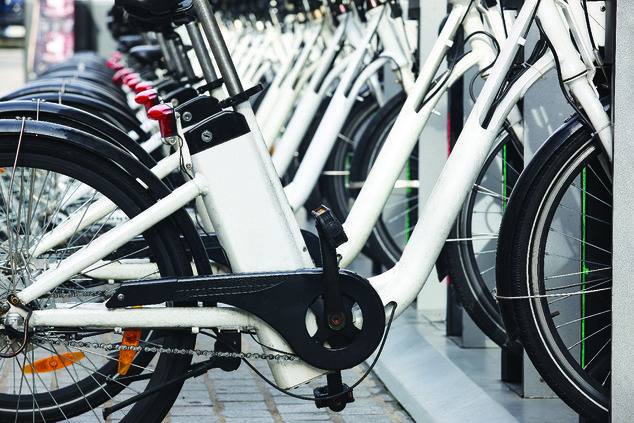Bicycles have long been a popular mode of transportation. Cycling is fun and a great form of exercise, and riding a bike is better for the environment than driving a car or riding in other gas-powered vehicles.
Propelled by the long-standing popularity of bicycle transportation, electronic bikes, also known as “e-bikes,” have rapidly gained steam among adolescents and even adults in recent years. E-bikes look like regular bikes, but they feature an electric motor and a rechargeable battery. HealthyChildren.org says some e-bikes have a motor that only works when the rider is pedaling, while others include a throttle that enables the rider to use the bike whether he or she is pedaling or not. E-bikes can reach speeds between 20 and 28 miles per hour.
Although they can be exciting and convenient, e-bikes can be hazardous. According to Children’s Hospital of Orange County (CHOC), there has been a steady rise in pediatric injuries related to e-bikes. Common injuries include concussions, extremity fractures, skull fractures, and facial fractures. Such injuries can occur by falling off the e-bike, by colliding with an object while riding, or after being struck by a car. Sometimes pedestrians are injured after they are struck by an e-bike.
E-bikes, although motorized, are not presently classified as motor vehicles. In addition, the regulations regarding who can ride them vary depending on where one lives. Regulations vary depending on whether the e-bike is class 1, 2 or 3. The e-bike industry has grown rapidly, and safety regulations have not kept pace. It was only after dozens of dangerous e-bike fires in New York City that calls for standard UL certifications increased.
Parents may wonder if they should let their children ride e-bikes. The Consumer Product Safety Commission recommends that children between the ages of nine and 12 should not operate any product that travels faster than 10 miles per hour, including e-bikes. Parents may not realize that e-bikes are quite heavy, with some weighing in at 60 pounds. That can make e-bikes challenging for small kids to maneuver.
When considering e-bikes, prospective riders must take note of the following safety guidelines.
Slower is better. Choose an e-bike that has the lowest maximum speed. Never rig an e-bike to go faster.
Wear a helmet. No matter the age of a rider, all should wear helmets with the chin straps fastened. The same goes when riding a traditional bike, scooter, etc.
Do not ride with a passenger. Passengers increase the risk of crashing, so riders should never ask friends to ride with them.
Follow the rules of the road. E-bikes, along with manual bicycles, are governed by the same rules of the road that motorized vehicles must follow. Ride on the correct side of the road and in the same direction as traffic. Stop at all intersections and respect traffic lights and road signs.
Charge e-bikes while present. E-bike batteries can cause fires and there have been various instances of exploding batteries. Always be present when charging an e-bike battery. Never do so while sleeping or out of the house, and only use the recommended charger.





